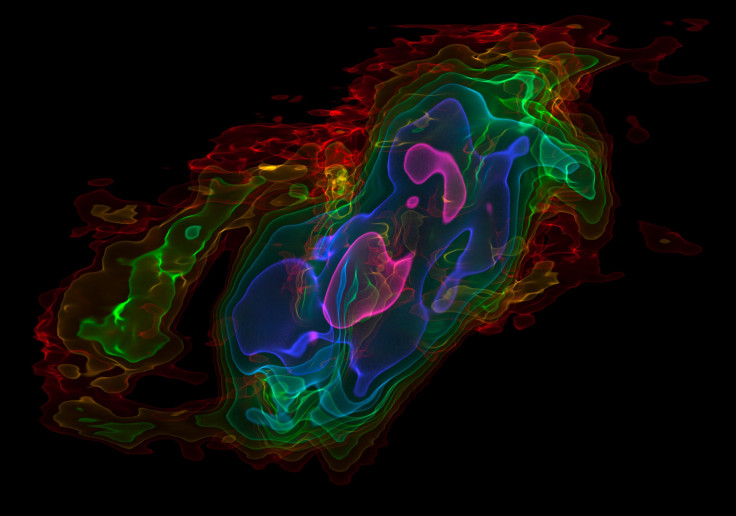Lack Of Massive Galaxies In The Universe May Be Caused By Lack Of Fuel Needed For Star Formation
Astronomers may have discovered why there are so few massive galaxies in the universe. Early star formation could cause a massive ejection of gas and debris from the galaxy, depriving new stars the fuel necessary for growth.

The astronomers discovered the phenomena by observing the spiral galaxy NGC 253, also known as the Sculptor Galaxy. The team, led by Alberto Bolatto, from the University of Maryland, used the Atacama Large Millimeter/submillimeter Array, ALMA, telescope in Chile discovered clouds of cold gas traveling outward from the center and escaping the galaxy. The study was published in the journal Nature.
The Sculptor Galaxy is considered a starburst galaxy and features an extraordinary amount of star formation activity. For the astronomers, NGC 253 is an ideal galaxy to observe to gain new insight about galaxy formation and their evolution over time. NGC 253 is located in the constellation Sculptor and is approximately 11.5 million light-years from Earth, reports European Southern Observatory. While trying to solve the mystery surrounding the lack of massive galaxies the astronomers were interested in studying what factors limit the number of stars that can be found in a galaxy.
Bolatto said, based on the ALMA observations, some galaxies expel more gas than they take in which would limit the number of stars that could be produced. “The amount of gas we measure gives us very good evidence that some growing galaxies spew out more gas than they take in. We may be seeing a present-day example of a very common occurrence in the early Universe,” said Bolatto.
According to the astronomers, older galaxies, such as an elliptical galaxy or a lenticular galaxy, should contain more stars than they do and are less massive than computer model projections. Previous observations have shown hotter gas, which is less dense, escaping the Sculptor galaxy but that would have little impact on a star’s ability within the galaxy to grow. The observation of the cold gas, which is much denser, being ejected from the galaxy could explain why there are few massive galaxies in the universe.
The astronomers determined the amount of gas being ejected had a mass nearly ten times that of the sun, notes ESO, reaching speeds between 150,000 to one million kilometers per hour, 93,206 to 621,327 miles per hour. Not all the gas ejected from the galaxy escapes the galaxy and could stay in the surrounding halo for millions of years before falling back to the galaxy and triggering new star formation activity. Future observations can determine how much of the ejected gas escapes and how much could be used for future star formation. Previously, NASA was able to observe the dormant black hole that lies at the center of NGC 253.
A video of the ALMA observations, courtesy of European Southern Observatory, can be viewed below.
© Copyright IBTimes 2024. All rights reserved.












